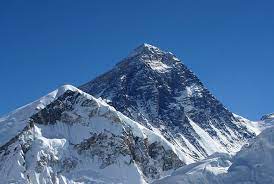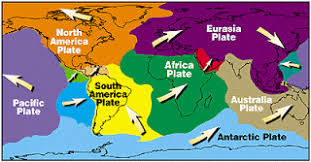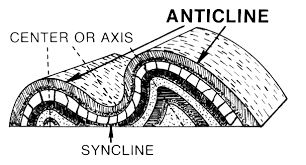Table of Contents
Definition of Young Fold Mountains
Young fold mountains are mountain ranges that are relatively new in geological terms and have been formed by the process of plate tectonics. These mountains are typically found at the boundaries of tectonic plates where two plates are colliding or converging, and the force of this collision causes the crust to crumple and fold. This process is called orogeny, and it results in the formation of high, steep mountain ranges with sharp peaks and deep valleys.
Examples of young fold mountains include the Himalayas in Asia, the Andes in South America, the Alps in Europe, and the Rockies in North America. These mountain ranges are still actively growing and are characterized by seismic activity such as earthquakes and volcanic eruptions.
These mountains are important in terms of their geological and ecological significance and have a significant impact on climate, weather patterns, and the distribution of flora and fauna.
The study of young fold mountains is an important aspect of geology, and understanding their formation, structure, and history can help us to better understand the geological processes that have shaped our planet over millions of years.

Distribution and Formation
Fold mountains are the most common type of mountains on Earth, and they form when two tectonic plates collide. The collision causes the earth’s crust to buckle and fold, creating a series of mountain ranges. The Himalayas, the Rockies, and the Andes are all examples of fold mountains.

- Converging Tectonic Plates: Fold mountains are formed when two tectonic plates collide. The plates are made up of continental or oceanic crust, and when they come together, the collision creates pressure that causes the earth’s crust to buckle and fold.
- Folding and Uplifting: As the plates continue to collide, the rocks in the earth’s crust begin to deform and fold. This process is known as folding and results in the formation of ridges and valleys. The pressure from the plates also causes the rocks to uplift, and over time, the mountains can grow taller.
- Erosion: As the mountains continue to rise, they are exposed to the forces of erosion, including wind, water, and ice. Erosion can shape the mountains into their characteristic steep slopes and jagged peaks, and the sediment that is eroded can form new landscapes elsewhere.
- Deformation and Faulting: Over time, the rocks in the mountains can undergo further deformation and faulting. Faults can form as the rocks continue to shift and move, creating earthquakes and other seismic activity.
- Mountain Building and Subsidence: The process of mountain building can continue for millions of years, but eventually, the mountains may begin to subside or erode away. However, the uplifted rocks can leave a lasting impact on the landscape, shaping the earth’s topography for millions of years to come.
Types of Fold Mountain
There are two main types of fold mountains.
- Young Fold Mountains: Young fold mountains are formed by the collision of two tectonic plates, and they are typically found in areas with active geological processes. The Himalayas, the Andes, and the Alps are all examples of young fold mountains. These mountains are characterized by their high peaks, steep slopes, and active seismic activity.
- Old Fold Mountains: Old fold mountains, also known as residual mountains, are formed by the erosion of younger fold mountains over time. These mountains are typically lower and less steep than young fold mountains and are found in areas that have undergone significant geological changes over millions of years. Examples of old fold mountains include the Appalachian Mountains in the eastern United States and the Urals in Russia.
Types of Fold: The fault is a fracture in the earth’s crust where rocks on either side have moved relative to each other.
- Anticline Fold: An anticline fold is a type of fold that forms an arch-like shape, with the oldest rock layer located at the core of the fold. The limbs of the fold dip away from the center, and the fold is typically characterized by the presence of a ridge or crest. Anticline folds are often found in areas of compression, such as at the edges of tectonic plates.
- Syncline Fold: A syncline fold is a type of fold that forms a trough-like shape, with the youngest rock layer located at the core of the fold. The limbs of the fold dip towards the center and the fold is typically characterized by the presence of a valley or depression. Syncline folds are often found in areas of tension, such as in rift valleys.
- Monocline Fold: A monocline fold is a type of fold that forms a step-like shape, with a single limb dipping steeply while the other limb remains horizontal. Monocline folds are often found in areas where the earth’s crust has been uplifted, and they can create distinctive landforms such as mesas and buttes.

Classification of Fault on the Basis of Direction of Movement of Rocks
- Symmetrical Fault: A symmetrical fault is a type of fault where the two sides of the fault plane move uniformly in opposite directions. This means that the hanging wall and the footwall move the same distance and in opposite directions, resulting in a vertical displacement of the rock. An example of a symmetrical fault is the San Andreas Fault in California.
- Asymmetrical Fault: An asymmetrical fault is a type of fault where the two sides of the fault plane move at different rates or distances, resulting in an inclined or tilted displacement of the rock. This means that one side of the fault plane moves up relative to the other side, resulting in a fault scarp or steep slope. An example of an asymmetrical fault is the dip-slip fault, where one side of the fault moves up relative to the other side.

In conclusion, fold mountains are a fascinating geological feature that has been formed over millions of years by the processes of tectonic activity, erosion, and weathering. The different types of fold mountains, such as young fold mountains, have unique characteristics and play an important role in the ecological and geological systems of our planet.